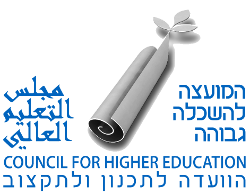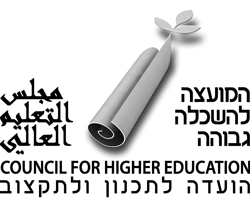10/10/2021
COVID Year – A revolutionary transition of the higher education system to online teaching
- The 2021-2022 academic year is expected to begin at 59 higher education institutions, while the daily life amidst the COVID crisis has been accompanying the system since the second semester of the previous year.
- During the second semester of 2019-2020, and as a result of the COVID pandemic, higher education institutions had to immediately transition to an online learning platform. This will be the place to mention that the fact that the elements of online learning have been incorporated into the institutions in the framework of the current multi-annual program has enabled the revolution’s success. Special efforts were made by institutions, students, the Planning and Budgeting Committee and the Council for Higher Education, who brought about the rapid organization of the system, and the provision of a suitable response to the new reality – and achieved that in a manner of within days.
- Academic studies continued primarily by means of online learning, including all necessary adjustments. Semester exams have taken at the institutions, which were attended by tens of thousands of students, and, in practice, the academic year was successful beyond our expectations.
- Research activities at higher education institutions continued and will continue to take place within the bounds of requisite health restrictions, and this includes limited presence on campuses. The universities responded to the need to open up designated COVID research labs, and they are investing a great deal of effort in studying this field and finding solutions that deal with that situation.
- Despite the challenges faced by the institutions, students and staff, as a result of the COVID crisis, the number of higher education students increased in 2020-2021 by 8%, and the expected increase in 2021-2022 is 4%.
- In response to financial difficulties currently faced by students, higher education institutions have expanded their assistance programs, in the framework of which considerable grants and loans were provided in order to allow studies to continue.
- In addition, an assistance program amounting to NIS 100 million was formulated, which provided students with assistance through three main channels: an expanded Student Assistance Fund budget, in the amount of NIS 40 million, and the granting of an additional 10,000 grants (NIS 4,000 each). Moreover, a designated scholarship fund was established by Mifal HaPayis for all students in Israel who were financially harmed by the crisis (NIS 50 million), which is intended to provide scholarships to thousands of students who volunteer in communal frameworks (the “Summer Vacation School Program”). Assistance is also provided to students through academic institutions to prevent dropouts and provide requisite financial assistance.
- In the course of the past two months, institutions have invested resources in improving the technological infrastructure that enables remote learning, and in training staff members in the context of digital learning by means of pedagogic training workshops for the purpose of providing staff members with tools that improve and optimize curricula and teaching methods, so as to tailor them to the new academic reality.
- An additional budget in the amount of NIS 70 million was allocated for this purpose.


